Besides providing travellers with a colourful new 20,000 m2 space reflecting Montréal’s creativity, the international jetty expansion has been awarded LEED Silver certification.
The four-storey building fully complies with the highest environmental and energy requirements. Its extensive sustainable development features include a sustainable envelope, energy efficient lighting and air conditioning systems, the integration of water reduction devices, the use of local or recycled materials, and the efficient management of construction waste.
THE TOP SIX LEED INITIATIVES IMPLEMENTED
FOR THE INTERNATIONAL JETTY EXPANSION PROJECT
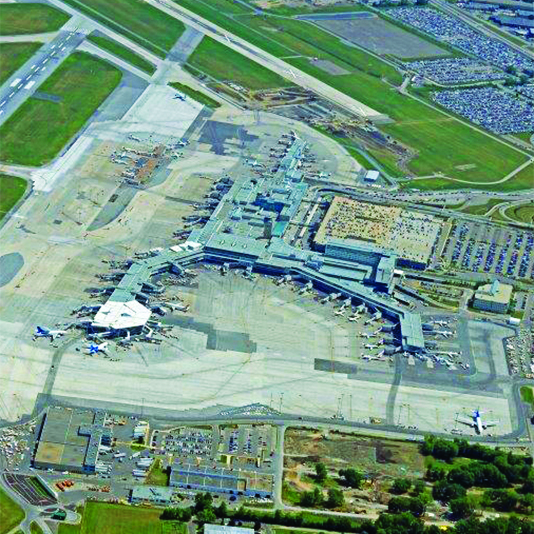
1. White roof
In an airport environment, practically all areas that are not built up are used for operations (runways, aprons, parking lots). No trees or vegetation are allowed. All ground surfaces are covered with hard materials such as concrete or asphalt that contribute to the heat island effect. Heat islands are created when materials absorb the sun’s heat and reflect it into the environment. That is why the project’s designers opted to top the new international jetty with a thermosealed membrane with a highly reflective white granule finish. This white roofing offsets the heat island effect for the entire building as well as for the portions of outdoor areas that reach beneath the roof.

2. Water efficiency
Low flow equipment in sanitary facilities. By installing efficient plumbing equipment, we are anticipating yearly water savings of 5,373,340 litres, or 36% of the total water consumption of a similar benchmark building. These water savings are equal to the water required to fill 50 Olympic-size swimming pools per year.
The reduction of drinking water consumption in the buildings reduces the quantity of water drawn from rivers and other bodies of water. The conservation of municipally supplied drinking water cuts the volumes of chemicals used in water treatment facilities as well as the greenhouse gasses produced by water treatment facilities and distribution.
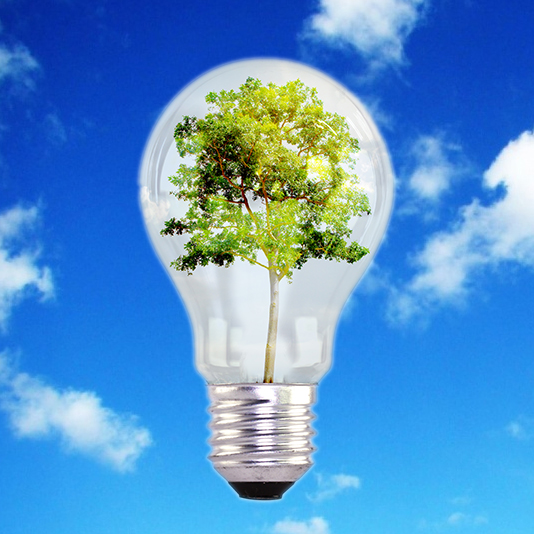
3. Energy efficiency
Energy savings – In light of the environmental impacts of most energy processes, ADM has adopted heat recovery strategies complete with a high-performance building envelope, efficient mechanical systems, LED lights in all public areas, adjustable speed moving walkways and escalators (in energy saving mode), light detectors to control the maximum efficiency of artificial light, and motorized blinds to optimize natural light levels and reduce heat increases due to direct sunlight exposure. A two-year contract for the use of sustainable (wind and solar) energy is under consideration.
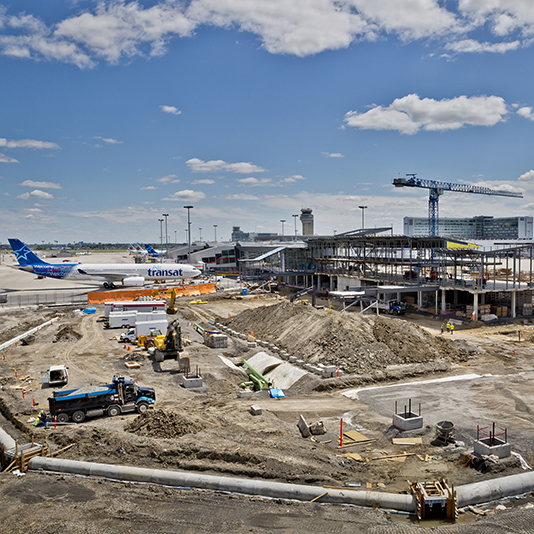
4. Waste material management
The implementation of a waste management program during construction resulted in approximately 95% of construction waste being diverted from landfills. Recyclable resources were redirected to manufacturing processes, and reusable materials were sent to appropriate sites for responsible management.
ADM also implemented a recycling and composting program for the management of waste material for the entire building. Bins for this purpose are strategically placed near restaurants and pick-up areas for easy collection. Waste material is then routed to basement rooms where it gets compacted in separate containers based on the nature of the material, and picked up by companies specializing in the responsible management of waste materials.
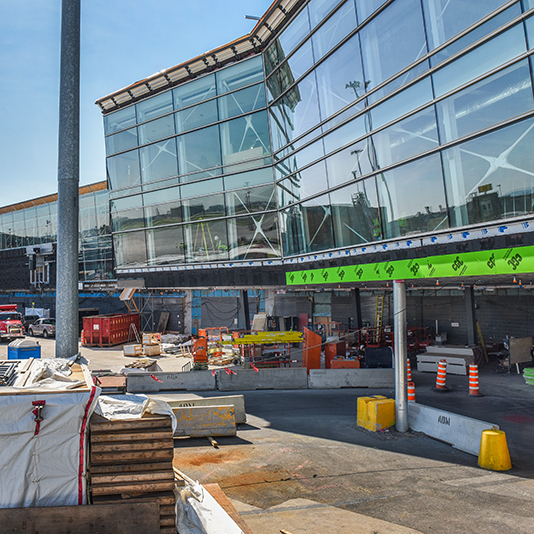 5. Responsible material choices
5. Responsible material choices
The designers made responsible choices for all building materials:
a. 14% of the materials used come from post-consumer or post-industrial sources, thus reducing the impacts resulting from the extraction and processing of raw materials. This supports the development of the market for products with recycled content and the diversification of products with high recycled content. Examples of products with recycled content used for the Jetty project include concrete, steel structure, carpeting, gypsum, concrete blocks, metal doors, acoustical ceiling systems, insulation products, toilet compartments and soft floor coverings.
b. 26% of the materials used come from local sources in order to support nearby suppliers and reduce the environmental impacts of transport. Examples of locally sourced products used for the Jetty project include concrete, steel, gypsum, insulation, roofing membrane, concrete blocks, metal casing, acoustic tiles and black terrazzo containing 100% locally sourced components.
c. 71% of wood based construction materials are Forest Stewardship Council certified and compliant with FSC principles and criteria for the health and long-term ecological integrity of forest ecosystems. The responsible forestry practices promoted by FSC certifications include sustainable logging (not exceeding a forest’s natural regeneration capacity), the preservation of wildlife habitats and biodiversity, the maintenance of soil and water quality, a reduced use of harmful chemicals, and the conservation of valuable forests.
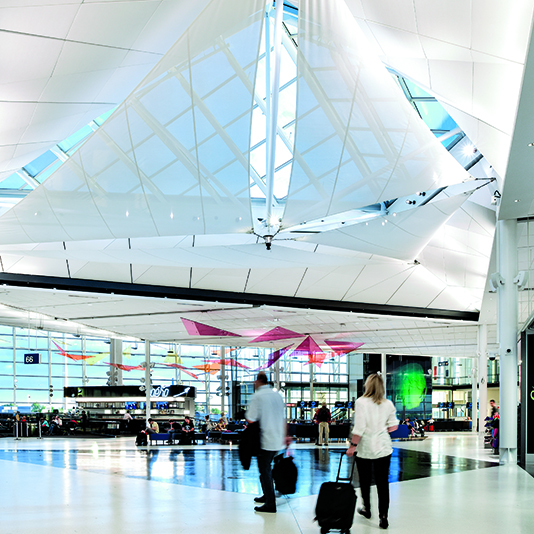
6. Air quality
In order to reduce indoor air contaminants and maximize the comfort and well-being of the building’s occupants, all selected adhesives, sealants, paints, coatings and linings respect the volatile organic compound (VOC) limits determined by independent or government standards for the creation of safe indoor environments. To that same end, the composite wood and agrifibre products used in the building construction contain no added urea-formaldehyde resins.
The air quality prior to occupancy was maximized by a period of several days of 100% outdoor air ventilation. The airport environment has long been smoke-free.
For specialized group visits, please contact us at affairespubliques@admtl.com.



